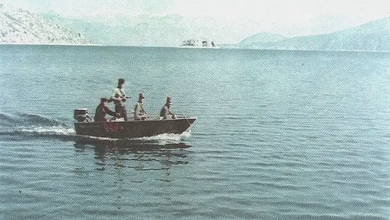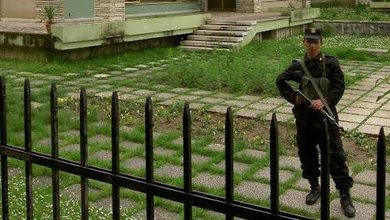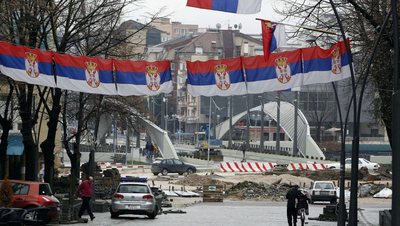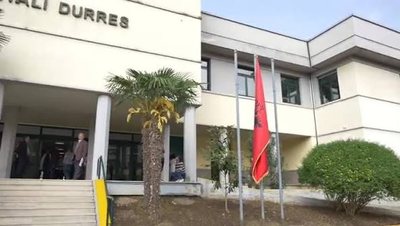
The Director of the Directorate of Information, Mr. Selami Zalli, in his capacity as a freelance researcher, has published an in-depth analysis of several aspects of the manipulation of the Martin Camaj file, placing this case in a broader framework of the functioning of the State Security mechanisms in the period 1944–1990. At the beginning of his statement, Zalli emphasized the existence of three lines of thought regarding the issue of whether or not Martin Camaj was a collaborator of the former State Security, making present the existence of three lines of thought:
Martin Camaj was a collaborator (bp).
It was and it wasn't. An ambiguous stance, camouflaged through the expression: "He was running away and didn't answer to the Security.?!. This line is assessed by Mr. Zalli as the most harmful and dangerous, as it attempts to establish and keep within the boundaries of legitimacy the activity of the State Security;
Martin Camaj was not a collaborator and his file was manipulated. For this line, he developed an extensive and argumentative presentation, with the aim of shedding light on this position, relying on documentary, procedural and historical analyses.
The special feature of this presentation was the clarification of secondary accusations overlooked in the discussion so far, but important and more serious, that appear in the former State Security file, where Martin Camaj is also presented as a polyagent. More specifically as a “Yugoslav agent”, “German agent” and “American agent”. It also addressed a fact that had not been analyzed before and had not been made public: the existence of two contradictory pseudonyms attributed to Martin Camaj, which are “Bregu i Kuq” and “Miloti”. Mr. Zalli’s approach was distinguished by an in-depth and structured analysis of the institutional and regulatory framework, not limiting itself to a simple reading of the documents, but examining them in light of the political and ideological context of the time. According to him, in order to correctly understand the nature of the accusations against Martin Camaj and the character of his file, it is necessary to take into account several fundamental factors:
the legal and institutional shortcomings that characterized the period 1944–1948;
the direct influences of the Yugoslav OZNA-UDB services on the construction and functioning of the State Security apparatus;
the process of formalizing this apparatus after 1948 through the Political and Organizational Platforms approved by the ALP, which placed it under strict control of the highest Party bodies.
After a brief description of the political situation and legislation of the time, he moved on to the analysis of the Platforms and Regulations of the OSSH, with a special focus on the procedures for taking individuals into processing (including changing the status from “inside” to “outside”), as collaborators (bp), the method of arrests, the quality of the defendant and other operational actions. According to Mr. Zalli, the conclusions of the 11th Plenum of the KQPKSH and the 1st Congress of the AKP in November 1948 highlighted not only the situation and errors within this sector, but also the fact that many of the acts, mainly due to the use of inappropriate forms and methods of work, according to the Yugoslav model. These factors contributed to the transformation of the state into a police state, which reflects that the files and accusations, including the case of Martin Camaj, cannot be understood and assessed correctly without taking into account the broader context of the manipulations and systematic violations that characterized that period and the following. Based on this analysis of the gaps and shortcomings in the period 1944-1948, Mr. Zalli then moves on to present the Political and Organizational Platforms of the State Security, approved in 1948 and 1958. These platforms emphasize the role of the ALPSH as the sole leading force, as well as the obligation to document the actions of the OSSH through reports and the administration of collaborators. A key element of these platforms was also the strict control and centralization of the activity of the Security only in the highest organs of the Party: the Central Committee, the Secretariat of the CC and the Political Bureau. This centralization reflects the efforts to formalize and control a system that, as previously emphasized, had been influenced by Yugoslav practices and had exhibited numerous violations and abuses during the first post-war period. All these elements came to light through a careful and structured analysis by Mr. Zalli, who, especially in the concluding part of his presentation, focused not only on the formal mechanisms of the functioning of the State Security, but also on the political and ideological context that defined them. What distinguishes his treatment is the critical and comparative approach to the sources, emphasizing that the institutional framework and the concrete actions of the Security structures cannot be separated from the political line of the time and foreign influences, especially Yugoslav ones in the initial phase. Through this methodology, Mr. Zalli does not limit himself to a dry description of documents, but helps to build a deeper understanding of how ideological and institutional control was installed, as well as the long-term consequences that this system had in relation to individual rights and the democratic functioning of the state. In this context, he further focuses on the internal structure of the mechanism for recruiting collaborators, analyzing in detail the procedures, steps and relevant documentation.One of the highlighted elements is the mandatory signing of the Special Declaration of Cooperation and Non-Disclosure, as an act that formalized the connection with the Security structures. Also, the processes of selection or destruction of documentation, by decision of a Special Commission, were accompanied by minutes and lists of separation, passing through a well-defined chain of protocols. Special emphasis was also given to the obligation of the operational worker to maintain regular contact with the agency, to compile the relevant report and to include it in the collaborator's file, subsequently reporting it to his superior. Meanwhile, in terms of investigations and detentions, Mr. Zalli points out the introduction of new elements such as the "3-day detention" or "secret arrest" and the competence to carry them out. In this way, Zalli builds a clear analytical framework to understand not only the nature of Martin Camaj's file, but also the way in which the Sigurimi apparatus functioned in the conditions of a state that had just emerged from war and was going through a deep phase of ideologisation and political centralization.
In order to clarify the case and assess the authenticity of the file in question, it was emphasized that Martin Camaj's file presents significant deficiencies in its documentary content. The standard documentation that, according to the practice and operational regulations of the time, should have been in the relevant file, is unjustifiably missing. These deficiencies relate to:
Mandatory files such as: Search Files, Fugitive Files, Facsimile Files (forms), Personal Files, Work Files, etc. Accompanied by the relevant type of card registered in the card file. In the absence of these, there should have been justifying documents such as: Separation Decision, Destruction Report (bibliography form). But these are also missing. These structural and documentary gaps are the first indicators of the lack of authenticity of the file and raise serious doubts about its subsequent manipulation.
Review of only a few specific acts and inconsistencies in the file
After analyzing the expected documentary framework, attention was focused on several concrete elements in Martin Camaj's existing file, which testify to procedural and legal irregularities.
Minutes of questioning as a defendant.
There are no registered criminal cases;
There is no "arrest warrant" (arrest warrant);
The person is considered a “defendant” without any decision, proposal or documented execution;
The release order is missing.
Formal irregularities:
Unclear definition of subjects;
Signatures missing or placed irregularly;
The minutes that should have been considered binding material are not in the relevant personal file;
The content of the documents does not match the story built in the file and the figures mentioned, such as Gjon Destanishta after his escape.
Attempting to create an artificial continuity of documentation
In terms of time, the documents take on a certain order only after 1958, where they can be identified:
Request for verification in the file: 10.11.1958, (result negative)
Verification and re-verification in the file: 11 and 19.11.1958, (again negative)
Decision to open the file: 10.11.1958,
Various approvals from the heads of the respective branches (1959),
Decision to accept for processing 2A: 15.01.1972,
Decision to archive: 14.01.1992.
This continuity, although formal, cannot cover the gaps of the preceding period nor justify the lack of fundamental documents with special emphasis on those documents that were missing in 1958 and now appear to have been created in 1948...?!
Through the illustration of documents presented as "essential": signatures and a confrontation with private correspondence in normal and life conditions. A special place in the analysis is occupied by the examination and confrontation of documents that claim to prove connections with the Security:
Alleged statements. BP declaration, Form (with the value of the card), Minutes of questioning as a defendant, Correspondence with Rexhep Krasniqi (1971–1986), Correspondence with Mustafa Kruja (1954), Article that considers Camaj's writing as, "melodic lines - in fact jazz (thepa, thepa)". These elements are also fragmented, inconsistent in terms of time and content with the rest.
To continue with the breakdown of the charges as a polyagent;
Analysis of the accusation as a Yugoslav agent
Leaving and divorcing Yugoslavia at the first opportunity,
Denial of visits to Kosovo,
Obstruction of the work, signs in Yugoslavia (censorship),
The content of the work and creativity at the national level,
Links with intelligence and investment in the education of the Albanian element,
Education and vacations for immigrant students throughout the socialist camp.
Analysis of the accusation as a German agent
The response of the German Records Authority,
Analysis of the accusation as an American agent;
The informant's report from England (unproven...?!)
Just a few pages later, this information is received, treated, and served as true.
The existence of two pseudonyms
“Red Coast” & “Miloti” on page (55) without title.
The treatment of BP, especially of those "traitors";
Burning,
Keeping in formal relationships,
Punishment,
Deconsecration (public unmasking as bp) in no case, a matter of trust in the Regulation.
The double photo in the folder...?!
A photo of the subject taken by the newspaper in 1973, which does not coincide with the alleged time of the establishment of the file?!
Irregularities in inventories.
Inventory and list of operational workers, without date and without respecting the rules for keeping records,
A long time gap in information is noted, ..., 2 operational workers appear, ... do we have more than two types of calligraphy?!,
Concurrent entries, while entries (notes) in inventories and records should have been made immediately, etc.
Although the file has an inventory and the pages bear 2 numbers (20-23…), there is no separation decision, selection or destruction record in the file.
Inaccuracies in names of places and people (of the subject itself)
Closing with an exposition and finding that this is not the only manipulated file, bringing to light several ways of manipulating files beyond this case;
With a note writing the name in the agency register,
By building a cartel,
With a file cover, naming the file "work" or "personal" to culminate in the reflection on the cover of the name, "work and personal" files together (case "N..."), as well as through the note on the cover for the tracking file, the tracking pseudonym accompanied by the name of the person being tracked, which, by not reading and understanding its essence, creates the impression that we are dealing with an associate in the case "C....", etc.
Analytical Summary and Conclusion on the Martin Camaj File
The analysis of Martin Camaj's file reveals significant documentary deficiencies and serious procedural irregularities, which cast doubt on its authenticity. Basic files such as the personal work file, the file, the registry, the search and fugitive file, as well as documents justifying their absence, are missing. Also, the existing documents present incoherence, suspicious signatures, and acts that do not comply with the legal rules of the time. Accusations of collaboration with foreign services are unsupported and often from dubious documentary sources. Later interventions in the file are observed in the form of changes in calligraphy, the use of unclear pseudonyms, and the inclusion of materials out of time context.
cONcluSiON
Martin Camaj's file cannot be considered authentic and reliable. It presents clear signs of documentary manipulation and fabrication, with the aim of building a false narrative to label him as a collaborator. This case testifies to the practices of smearing, censorship and ideological fear that the regime of the time exercised towards important figures of Albanian culture, who, thanks to the capacity and what they represented, were considered a threat to the government.
“Censorship and smear are expressions of fear.” This statement best summarizes the essence of the Camaj case and many others like it.






















